Art & Exhibitions
Takashi Murakami’s New Works Fill His First Japanese Exhibition in Eight Years
“Takashi Murakami Mononoke Kyoto” will run until September 1.
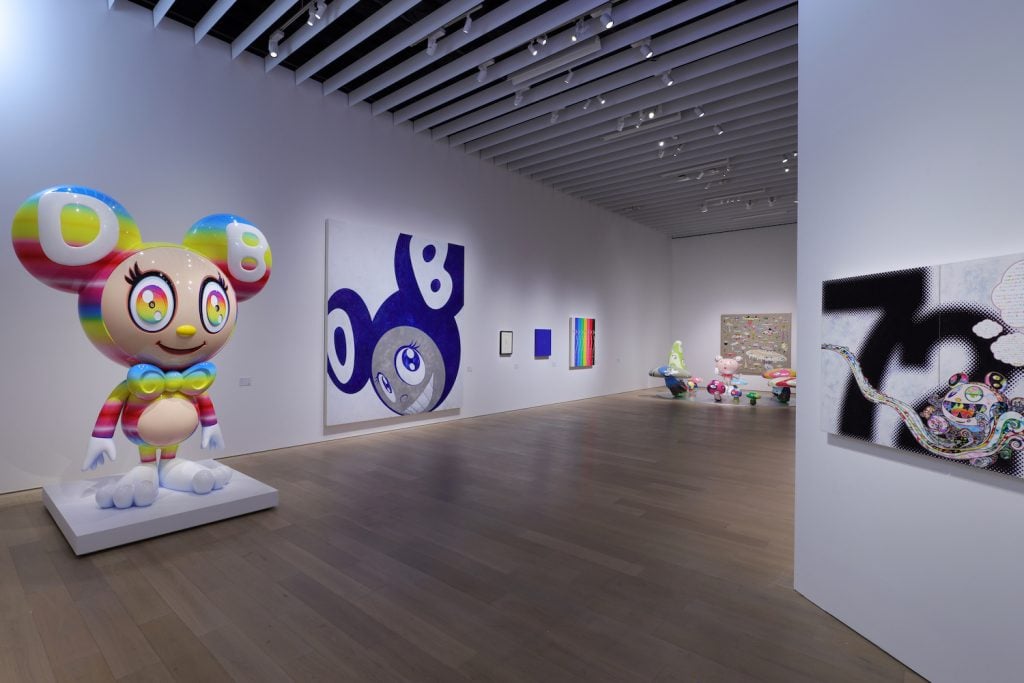
Japan’s oldest public art museum had grand plans for its 90th anniversary celebrations. It wanted to host a Takashi Murakami exhibition. It was less keen, however, on paying the shipping costs and insurance premiums associated with schlepping Murakami’s work from Europe and North America.
Its solution was to invite the superstar Japanese artist to create an entirely new body of work, one that riffed off Kyoto’s past, present, and future. After all, the museum argued, despite Murakami’s international reach, his studio was Tokyo-based, and at age 62, he was still relatively young and up to the task.
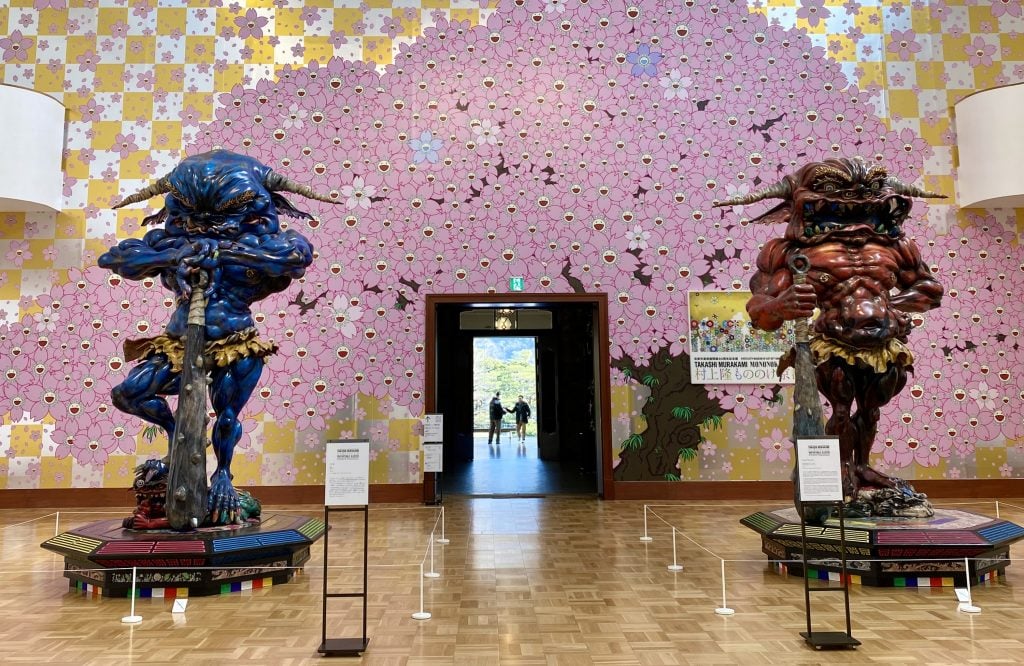
View of the entrance to “Takashi Murakami Mononoke Kyoto.” Photo: Kozo Takayama/Takashi Murakami/Kaikai Kiki Co.
The pitch came from Shinya Takahashi, Kyoto City Kyocera Museum of Art’s general manager, who boasts a long and fruitful relationship with the artist. Murakami obliged and result is “Takashi Murakami Mononoke Kyoto,” set to run through Sept 1, an exhibition of more than 170 works, the vast majority of which are new.
So new, in fact, some are unfinished. Inside the show, there’s a notice informing visitors that works will be updated over the course of the exhibition’s run by Murakami and his assistants.
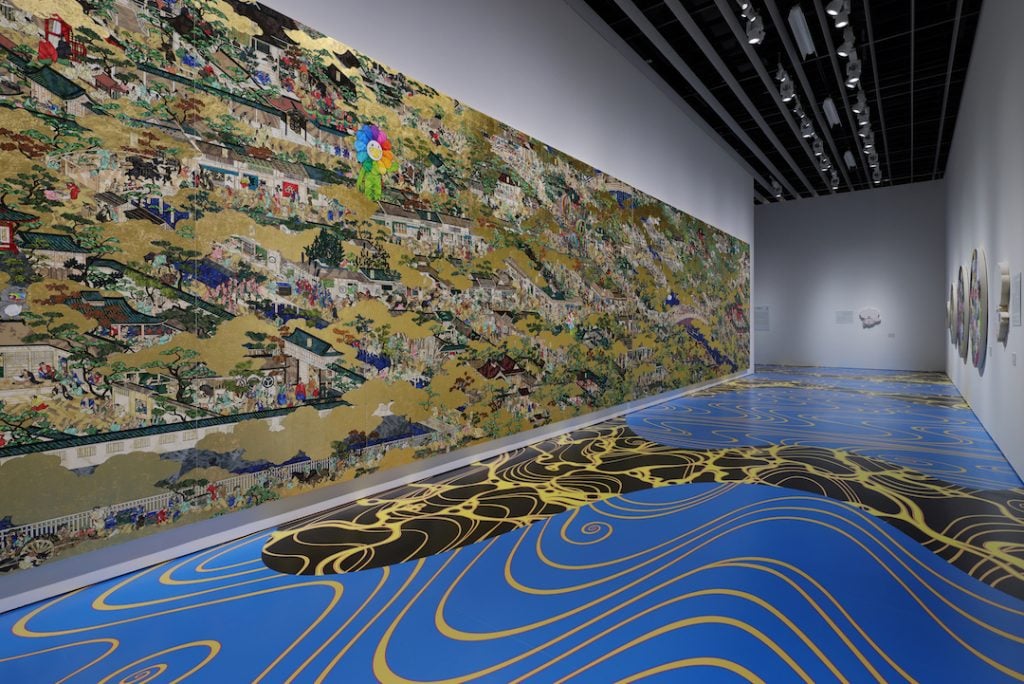
Installation view of Rakuchu Rakugai Zu Matabei Iwasa Rip by Takashi Murakami at “Takashi Murakami Mononoke Kyoto” at Kyoto City Kyocera Museum of Art. Photo: Kozo Takayama/Takashi Murakami/Kaikai Kiki Co.
Two works that are neither new nor unfinished are the pair of 14-foot statues that visitors encounter at the exhibition’s entrance: Embodiment of “A” and Embodiment of “Um.” The ghoulish, club-clutching twins are guardians, the likes of which tradition says should be called upon in times of misfortune. Murakami created them in the aftermath of the 2011 Tohoku earthquake, placing them on multicolored plinths, as though pieces for a giant board game.
Murakami has forever smashed together traditional and modern here he does so in the context of his host city. For much of Japan’s Edo period, 1603 to 1868, Kyoto was the nation’s cultural heart, a wellspring of painting, architecture, and the performing arts.
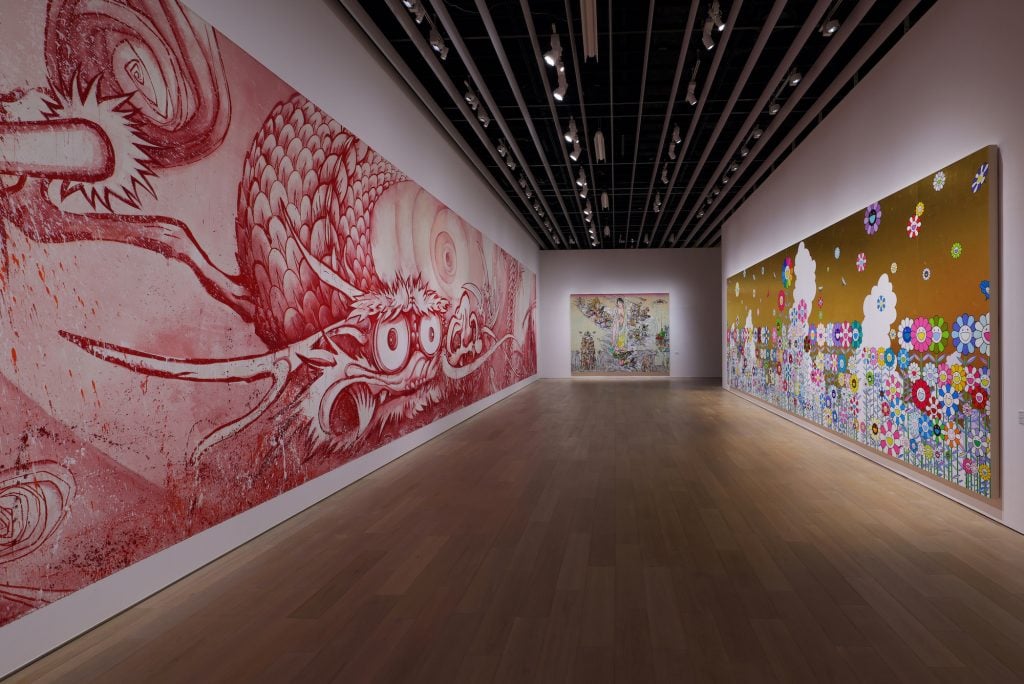
Installation view of “Takashi Murakami Mononoke Kyoto” at Kyoto City Kyocera Museum of Art. Photo: Kozo Takayama/Takashi Murakami/Kaikai Kiki Co.
The centerpiece of this conversation is perhaps Rakuchu Rakugai Zu, a 43-foot long reimagining of Iwasa Matabei’s Scenes In and Around Kyoto. The 17th-century painting presents a city shrouded in golden clouds out of which everyday scenes emerge—a man sells melons, a shrine festival takes place, women go shopping. Murakami reimagines the original, apparently with planning help from A.I., and sprinkles on his own icons.
Another turn to Kyoto’s painting tradition comes with Murakami’s presentation of Wind God and Thunder God. The pair were tackled by many of the Edo period’s finest painters and Murakami follows the playfulness of Ogata Korin’s celebrated work (now housed in Tokyo National Museum) and fills it with characteristic color and whimsy.
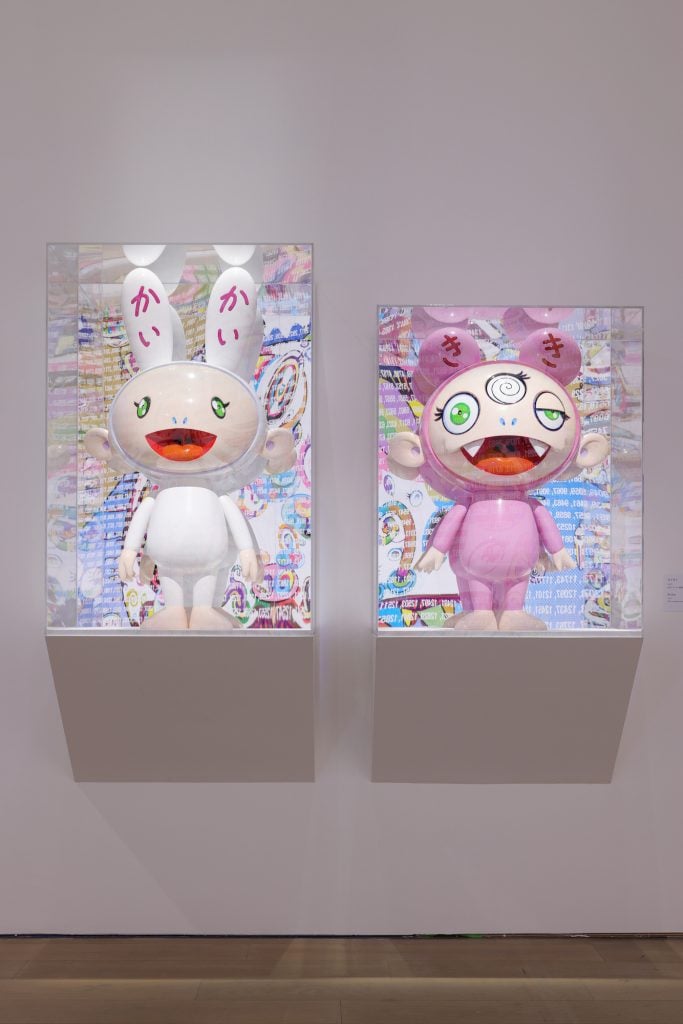
Installation view of Murakami’s sculptures “Kaikai” and “Kiki” at “Takashi Murakami Mononoke Kyoto” at Kyoto City Kyocera Museum of Art. Photo: Kozo Takayama/Takashi Murakami/Kaikai Kiki Co.
For all that’s new, there’s plenty that serves as a reminder, or introduction, to the faces and figures around which Murakami has built his brand over the past two decades. There are sculptures of Kaikai and Kiki, his green-eyed, jaw-agape monsters. A technicolored Mr. DOB, supposedly his answer to Mickey Mouse, made in 1993. Outside, in the pond of the museum’s garden, he’s installed a giant golden Flower Parent and Child.
There have always been murmurs that Murakami remains an artist who is better appreciated abroad than at home. This is the artist’s first exhibition in the country eight years, though contrary to the museum’s claims, it seems unlikely to be his last.





